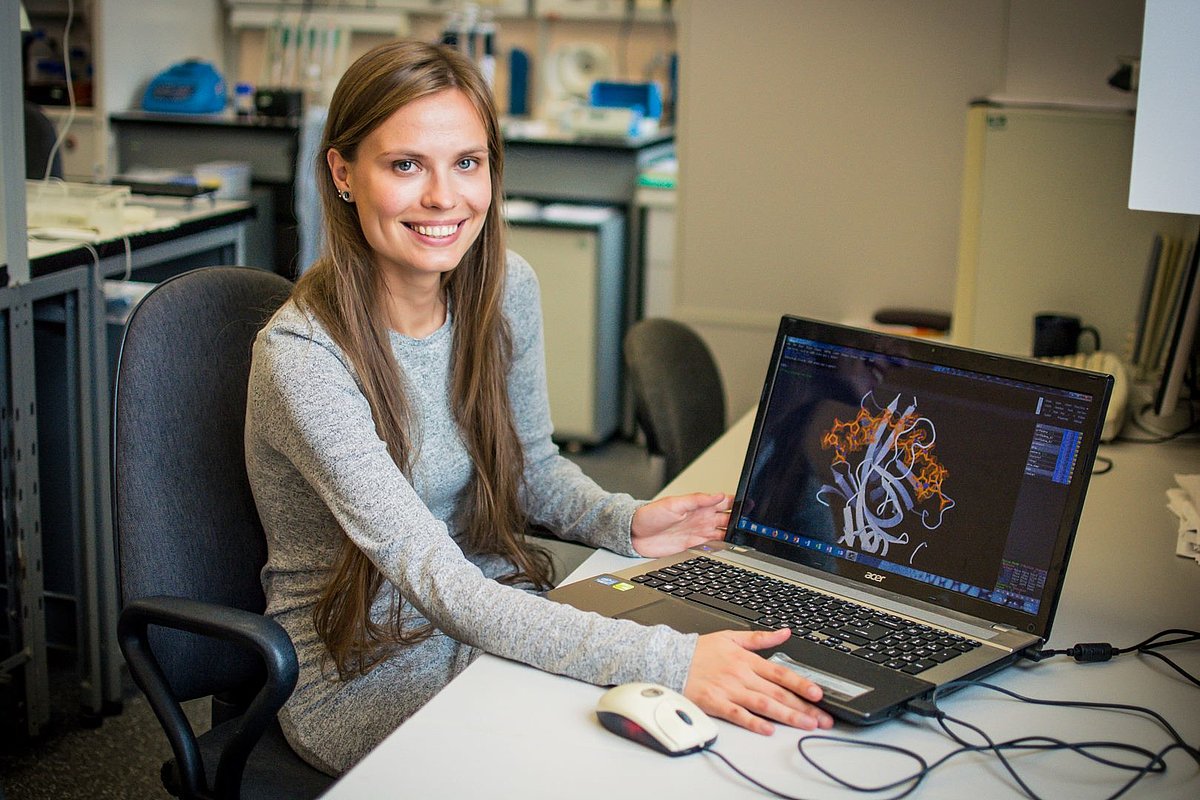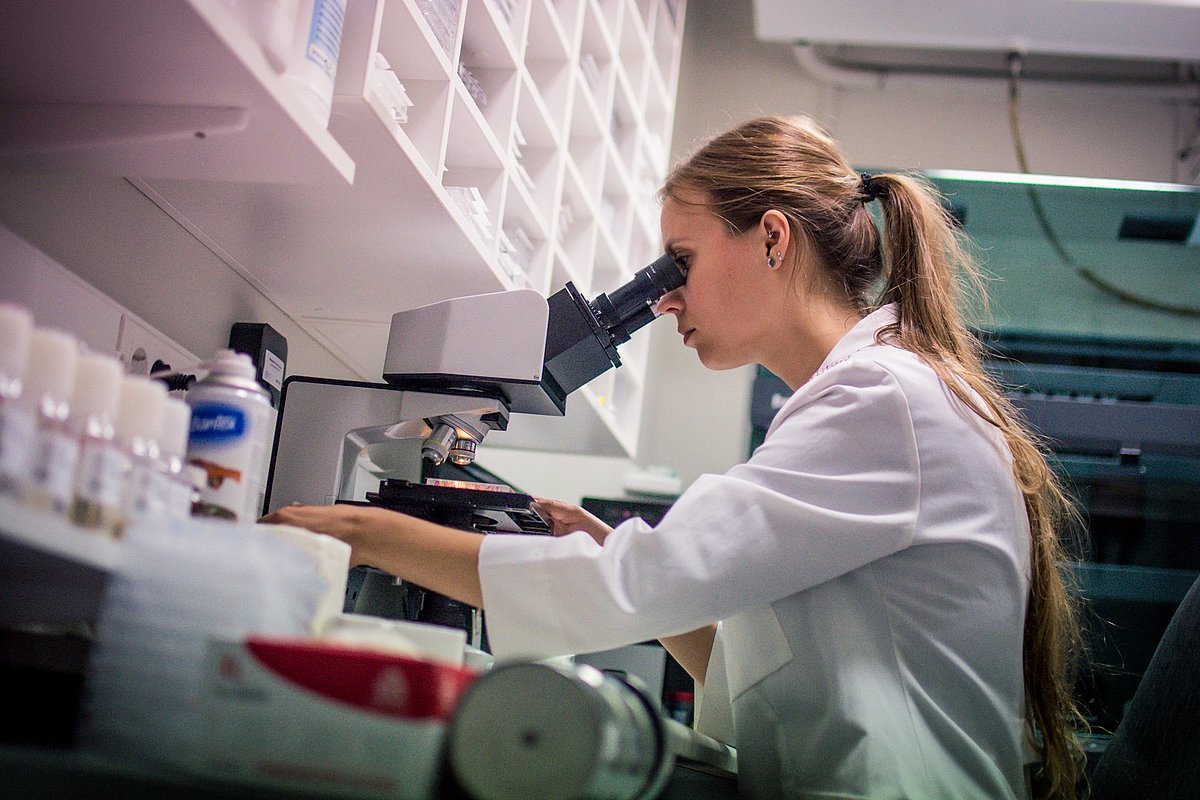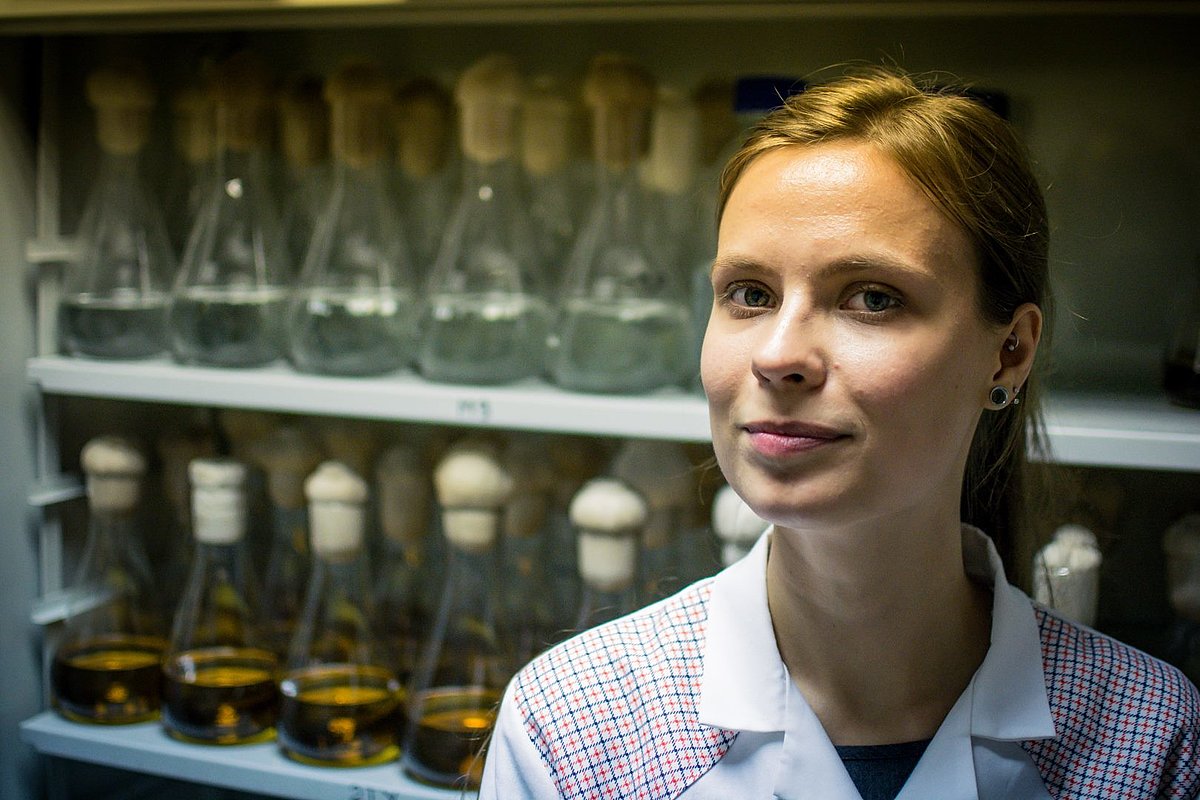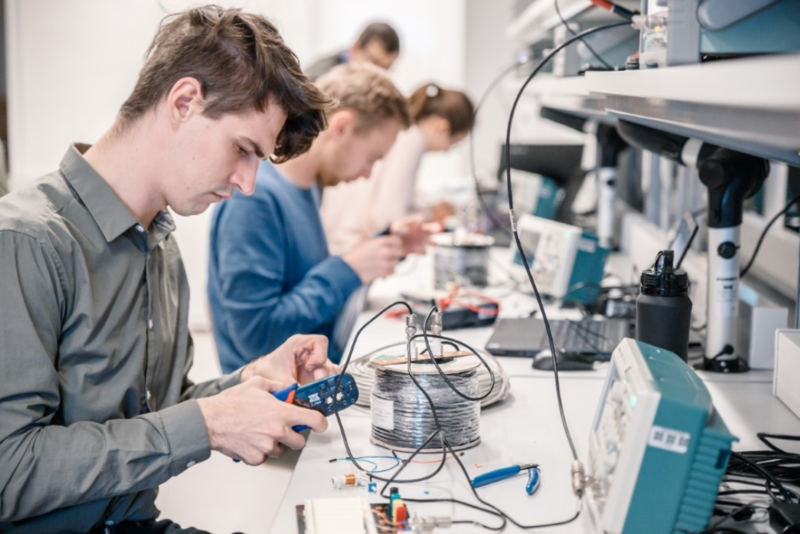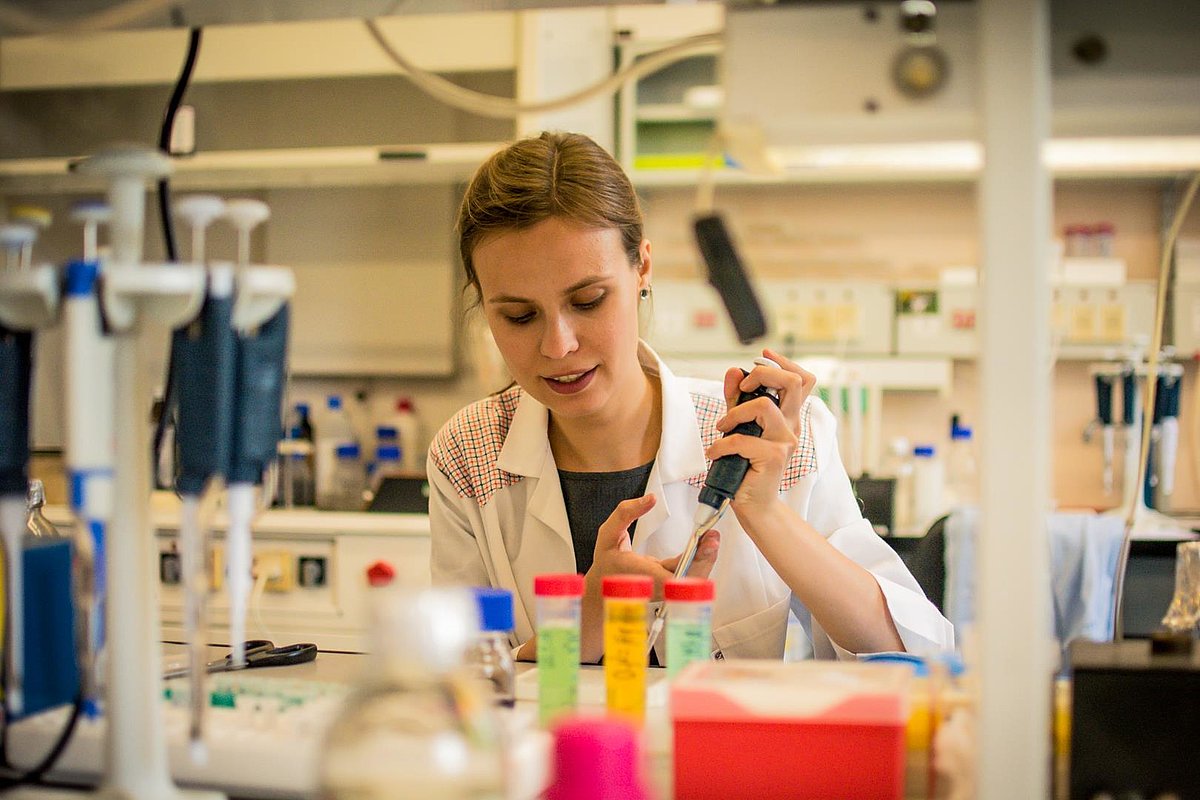
Although invisible on a daily basis, bacteriophages are the most widely represented group of viruses, and DNA phages – bacterial viruses with a DNA genome – are the most common creatures on Earth, far outnumbering ubiquitous bacteria. “The sequences of almost all newly discovered phages are dominated by proteins with a hitherto structure and function – biological “dark matter”, which is important not only for the research on phages themselves, but also for the discovery of new proteins with potential applications in science, biotechnology or medicine,” says the young researcher Elīna Černooka.
“Our research contributes to the common body of knowledge about what beings we inhabit our planet with, and, looking deeper, how fundamental life processes emerge from atoms and molecules,” comments Elīna. In addition, the young researcher emphasizes that phage protein research has historically and today not only enriches the knowledge of researchers and educates the general public in biology, but also creates a potential for the development of new products. For instance, seeing the rapid spread of antibiotic resistance, scientists predict that phage proteins in particular, called endolysins, will serve as a new type of antibacterial agents in the future.
Unexplored bacteriophages
In life sciences, phages have long served as popular model systems for the understanding of various biological processes at a molecular level, and the knowledge gained is then transferred to many other fields. In addition, the ability of phages to recognize, infect and kill specific bacteria makes them as promising tools for treating animal and plant infections. Modern technologies make it easier and faster than ever to find out DNA sequences of an organism’s genome, and the collection of bacteriophage DNA sequences in databases is rapidly constantly growing. However, so far, only a small number of model phages have been studied well, while most of the phage diversity has remained unexplored.
Molecular biologist Elīna Černooka at the Latvian Biomedical research and study centre (BMC) conducts research named “Characterization of new DNA bacteriophage genomes and structural and functional research of selective biologically important proteins”. In this project, she, together with colleagues from Dr.biol. Kaspars Tārs scientific team, has discovered more than 40 new viruses that can infect bacteria and has studies about half of them in more detail, including three genetically unique viruses from Antarctica. Several recently discovered phages represent hitherto groups of viruses, such as the scientific group’s discovered phage Mimir87, to which the researchers have just dedicated a scientific publication, as well as the latest addition to the organism sequence database GenBank – the Antarctic phage Lietuvens.
At the crossroads of discoveries
Research into the genetic material of these new viruses has revelead many as of yet uncharacterized viral proteins, and Elīna is working to “recreate” them in the laboratory, purify and crystallize them, with the ultimate goal of finding out their 3D structure and properties. “By studying one protein of an unknown function, we discovered that it binds a single strand of a DNA molecule, and we showed exactly how it protects the viral genetic material during DNA replication,” explains Elīna. A section on experimental protocols and methodologies for the “Methods in Molecular Biology” series has been prepared in English and will be published shortly upon a special request about this protein.
The molecular biologist list recent revelations: “We have also discovered a number of new types of endolysins, phage proteins, which, after the virus has multiplied inside the cell, destroy the bacterial cell wall and thus can lead to the cell bursting and the virus escaping into the environment. We have determined the 3D structure of a new endolysin, which is different from all endolysins studied so far, as well as tested the antibacterial properties of this protein, and the obtained data is currently being compiled for another scientific publication.”
Support that promotes science
Elīna explains that the scholarship of the patron “Mikrotīkls”, managed by the UL Foundation, has provided her with financial stability for her doctoral studies and research, which is a rare opportunity and privilege for a doctoral student in Latvia: “It has allowed be to invest in my research and volunteer as a lecturer, as well as inspired to get involved in initiatives to popularize and develop the Latvian science space.”
Further the doctoral student accentuates that the support for science and researchers reveal the level of development and foresight of the society, because it is the scientific work that underpins modern medicine, technology and various innovations that solve narrow and large-scale problems and improves people’s lives: “Why is it important to support young researchers? Who else, if not them, will lead our scientific laboratories and make discoveries in Latvia in the future? Discoveries that will enhance the country’s prestige, promote economic progress and advocate the wellbeing of local and global communities.
About the University of Latvia Foundation
Since 2004, the UL Foundation provides an opportunity to patrons and cooperation partners to support both the University of Latvia and other leading higher education institutions of our country, thereby investing in the future of Latvia. The priorities of the UL Foundation are to support the most outstanding, dedicated students and researchers, to advance creation of a modern study environment, as well as to promote construction and refurbishment of university’s buildings.

 Academic Centre
Academic Centre